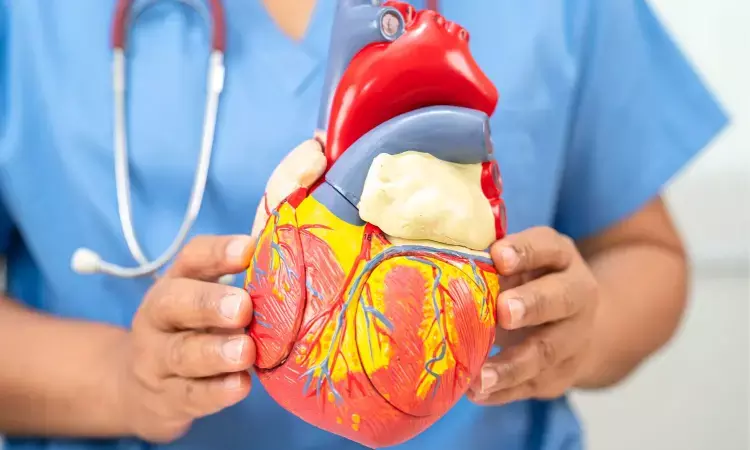- Home
- Medical news & Guidelines
- Anesthesiology
- Cardiology and CTVS
- Critical Care
- Dentistry
- Dermatology
- Diabetes and Endocrinology
- ENT
- Gastroenterology
- Medicine
- Nephrology
- Neurology
- Obstretics-Gynaecology
- Oncology
- Ophthalmology
- Orthopaedics
- Pediatrics-Neonatology
- Psychiatry
- Pulmonology
- Radiology
- Surgery
- Urology
- Laboratory Medicine
- Diet
- Nursing
- Paramedical
- Physiotherapy
- Health news
- Fact Check
- Bone Health Fact Check
- Brain Health Fact Check
- Cancer Related Fact Check
- Child Care Fact Check
- Dental and oral health fact check
- Diabetes and metabolic health fact check
- Diet and Nutrition Fact Check
- Eye and ENT Care Fact Check
- Fitness fact check
- Gut health fact check
- Heart health fact check
- Kidney health fact check
- Medical education fact check
- Men's health fact check
- Respiratory fact check
- Skin and hair care fact check
- Vaccine and Immunization fact check
- Women's health fact check
- AYUSH
- State News
- Andaman and Nicobar Islands
- Andhra Pradesh
- Arunachal Pradesh
- Assam
- Bihar
- Chandigarh
- Chattisgarh
- Dadra and Nagar Haveli
- Daman and Diu
- Delhi
- Goa
- Gujarat
- Haryana
- Himachal Pradesh
- Jammu & Kashmir
- Jharkhand
- Karnataka
- Kerala
- Ladakh
- Lakshadweep
- Madhya Pradesh
- Maharashtra
- Manipur
- Meghalaya
- Mizoram
- Nagaland
- Odisha
- Puducherry
- Punjab
- Rajasthan
- Sikkim
- Tamil Nadu
- Telangana
- Tripura
- Uttar Pradesh
- Uttrakhand
- West Bengal
- Medical Education
- Industry
High liver fat fraction in CCTA helps diagnose major adverse cardiovascular events in T2DM patients: Study

A new study published in the journal of BMC Cardiovascular Diabetelogy showed that an elevated liver fat fraction (LFF) on coronary CT angiography (CCTA) imaging seems to be a separate predictor of major adverse cardiovascular events (MACE) in individuals with type 2 diabetes.
Numerous microvascular and macrovascular problems are brought on by type 2 diabetes mellitus (T2DM). Among people with type 2 diabetes, cardiovascular illnesses are the primary cause of death. Therefore, it is crucial to accurately predict major adverse cardiovascular events in patients with T2DM to enable timely therapeutic intervention in the management of cardiovascular problems in these patients. This study was set to investigate the incremental predictive value of liver fat fraction in predicting MACE in individuals with T2DM.
A total of 265 T2DM patients who arrived at our hospital between August 2021 and August 2022 with chest discomfort and distress indicative of coronary artery disease (CAD) were prospectively recruited in this study. Within a 7-day period, all individuals had upper abdomen dual-layer spectral detector computed tomography (SDCT) and CCTA.
Carefully documented were the LFF ascertained by the SDCT multi-material breakdown technique, CCTA imaging characteristics, and detailed clinical data. MACE was defined as the incidence of late-phase coronary revascularization operations, acute coronary syndrome (ACS), cardiac mortality, and heart failure-related hospitalizations.
During a median follow-up of 30 months, 51 MACE cases were reported among 265 patients (41% male). The patients with type 2 diabetes who had MACE had a significantly greater LFF than those who did not. The cutoffs of 4.10 and 8.30 were used to separate the LFF into tertiles.
Kaplan-Meier analysis showed that regardless of the various subgroups in the coronary artery calcium score (CACS) or framingham risk score (FRS), individuals with greater LFF had a higher chance of developing MACE.
The findings of the multivariate Cox regression showed that patients with T2DM in the second and third tertiles had a considerably greater risk of MACE than those in the lowest tertile. The independent associations of LFF tertile and CACS with MACE persisted even after controlling for early revascularization.
Also, a net reclassification improvement (NRI) of 0.397, and an integrated discrimination improvement (IDI) of 0.100, the model incorporating LFF, CACS, and FRS outperformed the traditional FRS model in terms of predictive performance and stable clinical net benefit with a C-index of 0.725. Overall, LFF as measured by non-enhanced SDCT was found to be an independent predictor of MACE in T2DM patients, even when early revascularization was taken into account.
Source:
Wang, M., Wei, T., Sun, L., Zhen, Y., Bai, R., Lu, X., Ma, Y., & Hou, Y. (2025). Incremental predictive value of liver fat fraction based on spectral detector CT for major adverse cardiovascular events in T2DM patients with suspected coronary artery disease. Cardiovascular Diabetology, 24(1), 151. https://doi.org/10.1186/s12933-025-02704-w
Neuroscience Masters graduate
Jacinthlyn Sylvia, a Neuroscience Master's graduate from Chennai has worked extensively in deciphering the neurobiology of cognition and motor control in aging. She also has spread-out exposure to Neurosurgery from her Bachelor’s. She is currently involved in active Neuro-Oncology research. She is an upcoming neuroscientist with a fiery passion for writing. Her news cover at Medical Dialogues feature recent discoveries and updates from the healthcare and biomedical research fields. She can be reached at editorial@medicaldialogues.in
Dr Kamal Kant Kohli-MBBS, DTCD- a chest specialist with more than 30 years of practice and a flair for writing clinical articles, Dr Kamal Kant Kohli joined Medical Dialogues as a Chief Editor of Medical News. Besides writing articles, as an editor, he proofreads and verifies all the medical content published on Medical Dialogues including those coming from journals, studies,medical conferences,guidelines etc. Email: drkohli@medicaldialogues.in. Contact no. 011-43720751


